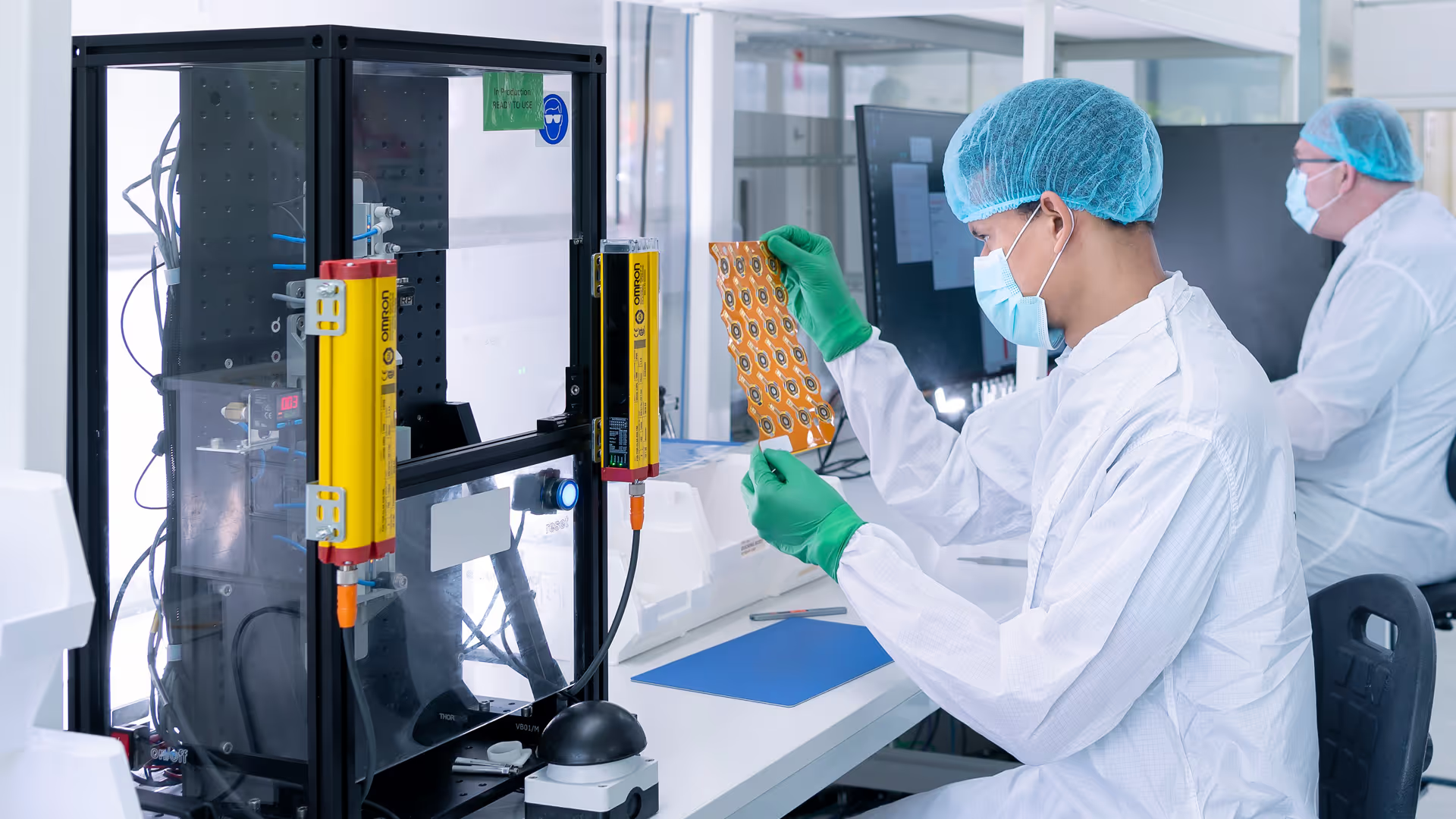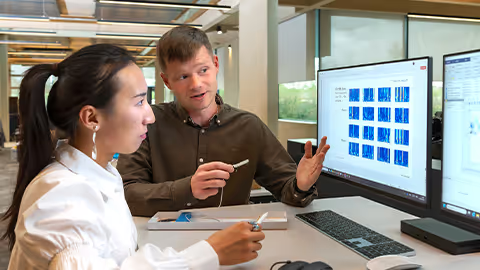Will Cramer from TTP’s Manufacturing team explores how to successfully transition from an innovative prototype to a manufactured device, whether for field trials or pilot production to support a first-generation product launch.
Put yourself in the position of a MedTech Start-up preparing for a clinical trial.
The success of a clinical trial hinges on reliability, accuracy, and consistency: attributes not always present in early-stage device prototypes, which often prioritise technological proof-of-concept over manufacturability.
To demonstrate efficacy in the trial, you must evolve from showcasing your core technology with functional prototypes to delivering consistent, reproducible devices. For manufacturing, this means translating complex, lab-scale processes into controlled, repeatable operations that can meet regulatory and performance standards.
Take, for example, an implantable medical device. Its function may require a complex interplay of electronic, mechanical, and chemical processes, all in a tightly integrated package. A skilled engineer or scientist might draw on years of experience to craft a working prototype, but manufacturing demands a different mindset: repeatability, de-skilling, cost-efficiency, and scalability, all without compromising patient safety or device efficacy.
Achieving this requires close collaboration between design and manufacturing teams, alongside effective transfer of knowledge to ensure a smooth scale-up. But mass manufacturers are often hesitant to take on such projects, especially those involving novel technologies, unless the commercial potential justifies the time and capital investment required for large-scale production.
Although outsourcing to low-cost geographies such as China may seem attractive, it often introduces unacceptable risks. This is particularly true for innovative, regulated devices still seeking validation in high-stakes markets.
So, if you're navigating this stage, what should you focus on?

1. Assess manufacturing readiness and device requirements
The first step is to evaluate your design’s manufacturing readiness. This assessment requires input from technical experts with a deep understanding of manufacturing processes. The specialisms that may have a bearing on manufacturing are numerous. In the medical device sector, input may be needed from specialists in mechanical assembly, wiring, consumable manufacturing processes (such as heat welding of foils), as well as facilities experts familiar with cleanroom operations, automation engineers, supply chain specialists and quality professionals.
The manufacturing team must quickly assimilate key aspects of the design and identify what will be critical for performance in line with industry standards and regulations. In fast-paced markets, quick iteration, both in troubleshooting and design updates, is essential.
Striking the right balance between device quality, time to establish manufacturing operations, and cost control also is critical. For example, while quality assurance is essential for clinical trials, the time needed to conduct those trials is equally important. At the same time, clear definition of requirements is vital to ensure that specifications, processes, and records can be formally documented in compliance with ISO 13485.
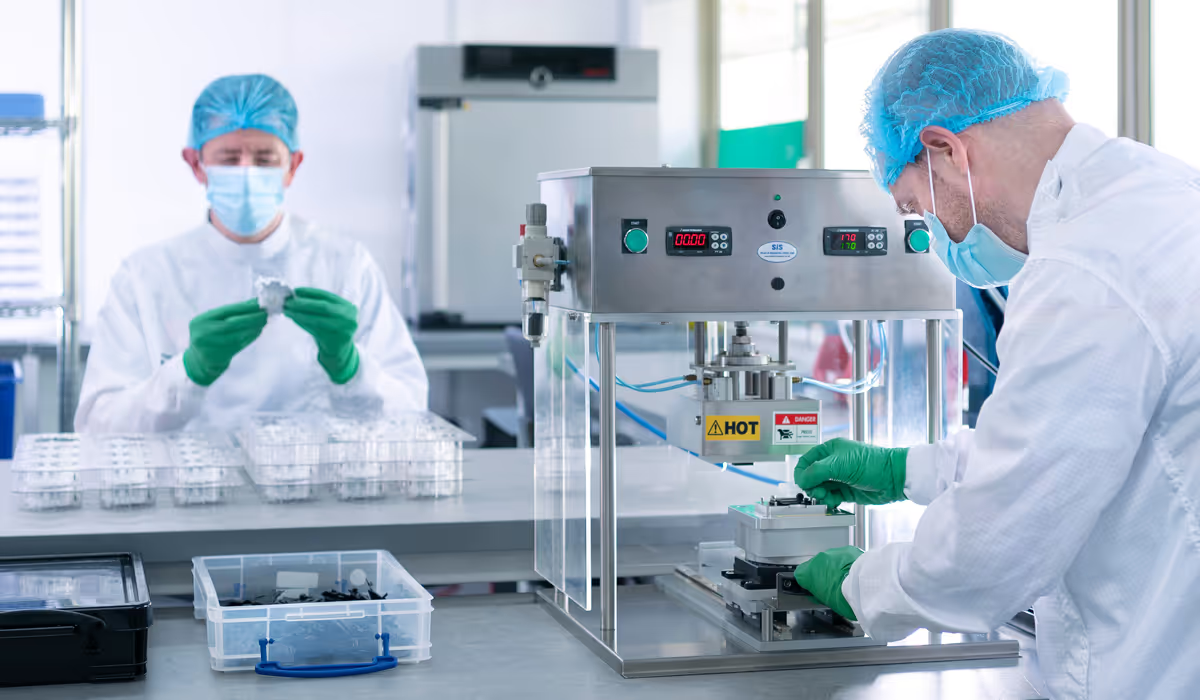
2. Establish a dedicated (repeatable) manufacturing process
Once the readiness of both the design and its manufacturing requirements are understood, the next step is building a robust manufacturing process.
With novel technologies, this often means developing custom unit operations tailored to the product, such as laser drilling, welding or ablation, surface modification, encapsulation, ultrasonic welding, or customised test set-ups. Crucially, the process must deliver repeatable output that conforms to the technical requirements. Stakeholders - investors, partners, regulators - will expect clear evidence of repeatability, particularly for novel functions that are central to the product’s value proposition.
At TTP, we approach this with a science-led, first-principles methodology. We often build mathematical models to predict how variations in parts or processes impact device assembly and performance.
For instance, mathematical modelling can reveal how accurately two functional modules must be aligned for reliable system performance, such as the alignment of a Peltier unit with a diagnostic cartridge to achieve thermal uniformity. It can also show how sensitive a manufacturing step is to environmental factors, for example when dealing with fluids in processes as diverse as accurate droplet deposition or dip coating. Armed with these insights, production procedures can be appropriately developed, alongside test methods to ensure manufactured devices meet requirements. The tests can then be integrated as in-process checks on the manufacturing line.
A key benefit of this analytical approach is its resilience: it provides an analytical foundation to assess the impact of unplanned design or process modifications, for example in response to changes in the supply chain. Without the bedrock of an analytical model or design of experiment data, teams often spend much longer establishing reliable manufacturing process through trial and error.
Today’s Start-up ecosystem often demands more than traditional manufacturing partners can provide. For example, devices may require ultra-clean environments or rely on niche processes like microfabrication. By bringing R&D and manufacturing under one roof, both product and process can be iterated rapidly, while modelling and targeted testing help accelerate progress from concept to production.

3. Design for manufacturing and scale-up
Once you’ve defined the technical requirements for manufacturing, traditional manufacturing considerations come into play. A design that can be produced in the hundreds at an acceptable unit cost must also support non-skilled assembly in higher volumes while minimising the risk of mis-assembly.
Conducting a Design for Manufacture and Assembly (DfMA) analysis, alongside a Process Failure Mode and Effects Analysis(PFMEA), helps refine the design to reduce common errors and mitigate risk.
Technical depth, manufacturing experience and, where appropriate, a science-led approach are the key factors in guiding decisions about the right manufacturing approach for your product. For example, will a dedicated manufacturing step unique to your device help or hinder later transfer to a contract manufacturing organisation (CMO)? In the interest of speed and agility, is it better to integrate a different component now and change the process later, or will deferring the change create greater challenges further down the line?
As you move from design to manufacturing, you will probably feel the tension between agile development and the need to freeze the design under strict change control within a regulated quality system. The key lies in timing: entering change control should coincide with a well-informed, validated understanding of both product and process.
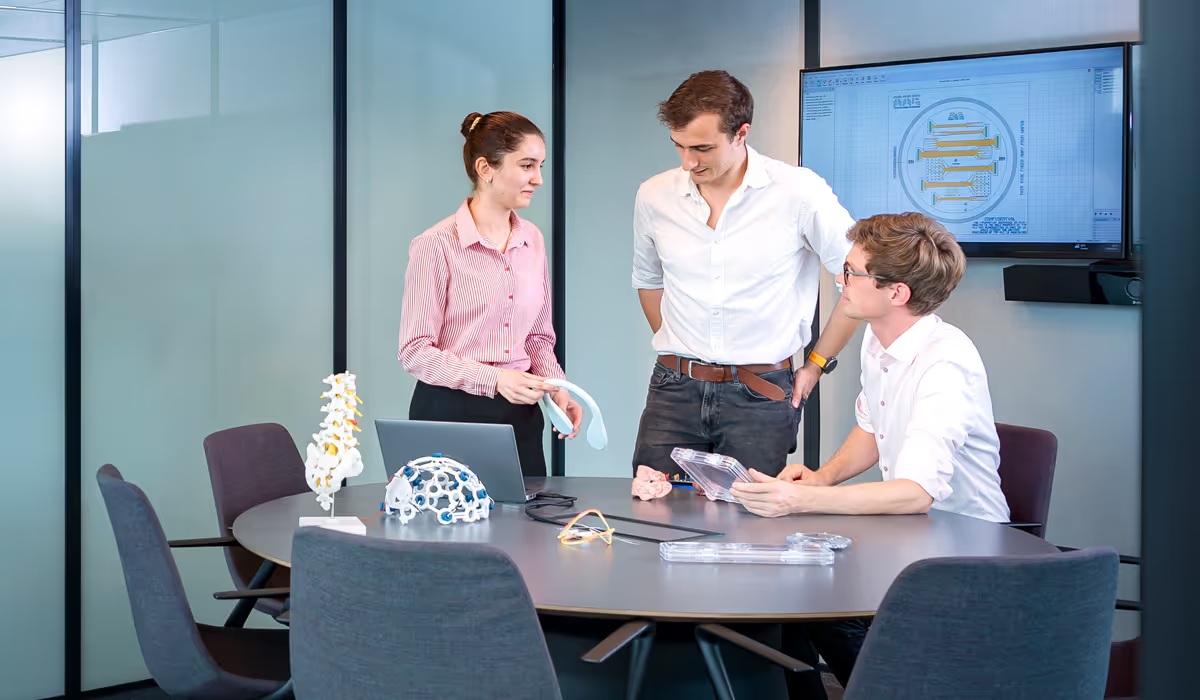
4. Quality documentation
Establishing a sound manufacturing process must be accompanied by robust documentation, validated manufacturing instructions, formal training records, and equipment and facility validation. In high-stakes, regulated sectors such as MedTech, retaining design ownership and Legal Manufacturer status is essential.
To support this, you need a partner capable of generating tailored data and documentation that feeds directly into your technical file: ensuring readiness for audits, regulatory submissions, and market entry.
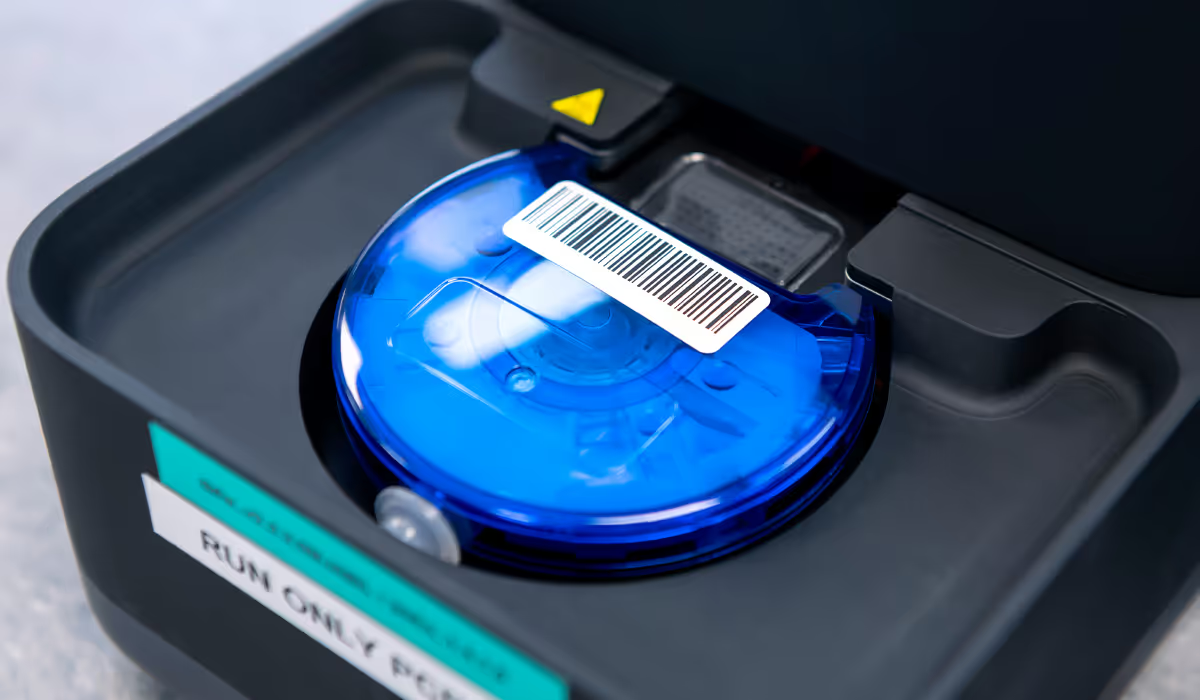
5. Freedom to transfer to a CMO at the right time
Putting in place a rigorous manufacturing process that meets all necessary regulatory requirements is the key to making the leap from design to a manufactured device that can prove its value in the real world. When production stabilises, demand grows, and your business scales, you can confidently transition to a contract manufacturing organisation (CMO).
In our experience, this handover is vastly smoother when the foundation includes verified designs, proven manufacturing processes, and comprehensive records. With these in place, you retain flexibility to scale production through a CMO without jeopardising quality or business continuity.
In conclusion
Establishing a strong, scalable manufacturing process early in the product journey is not just about getting to market: it’s about retaining control, ensuring quality, and creating the freedom to grow. By investing in robust technical understanding, manufacturing discipline, and regulatory compliance from the outset, MedTech innovators can reduce risk, accelerate development timelines, and remain agile as they scale.
This strategic approach enables a smoother transition to external manufacturing partners when the time is right - on your terms, with your standards, and without compromising the integrity of your device.
About TTP Manufacturing
TTP Manufacturing is TTP’s ISO13485-certified manufacturing service.
Our dedicated Manufacturing team works hand in hand with our product development teams, offering unrivalled technical depth and agility in establishing manufacturing operations for complex devices.
Our manufacturing capabilities span the full journey - from producing single-digit technology demonstrators, to scaling up manufacturing for thousands of instruments or hundreds of thousands of consumables. We have partnered with Start-ups and large multinationals across the Life Science and MedTech markets to bridge the gap between innovation and reliable, scalable manufacture.
Over the last 5 years TTP Manufacturing has made over 500 instruments and 250,000 consumable cartridges for more than 20 clients in the Life Sciences and MedTech sectors.

